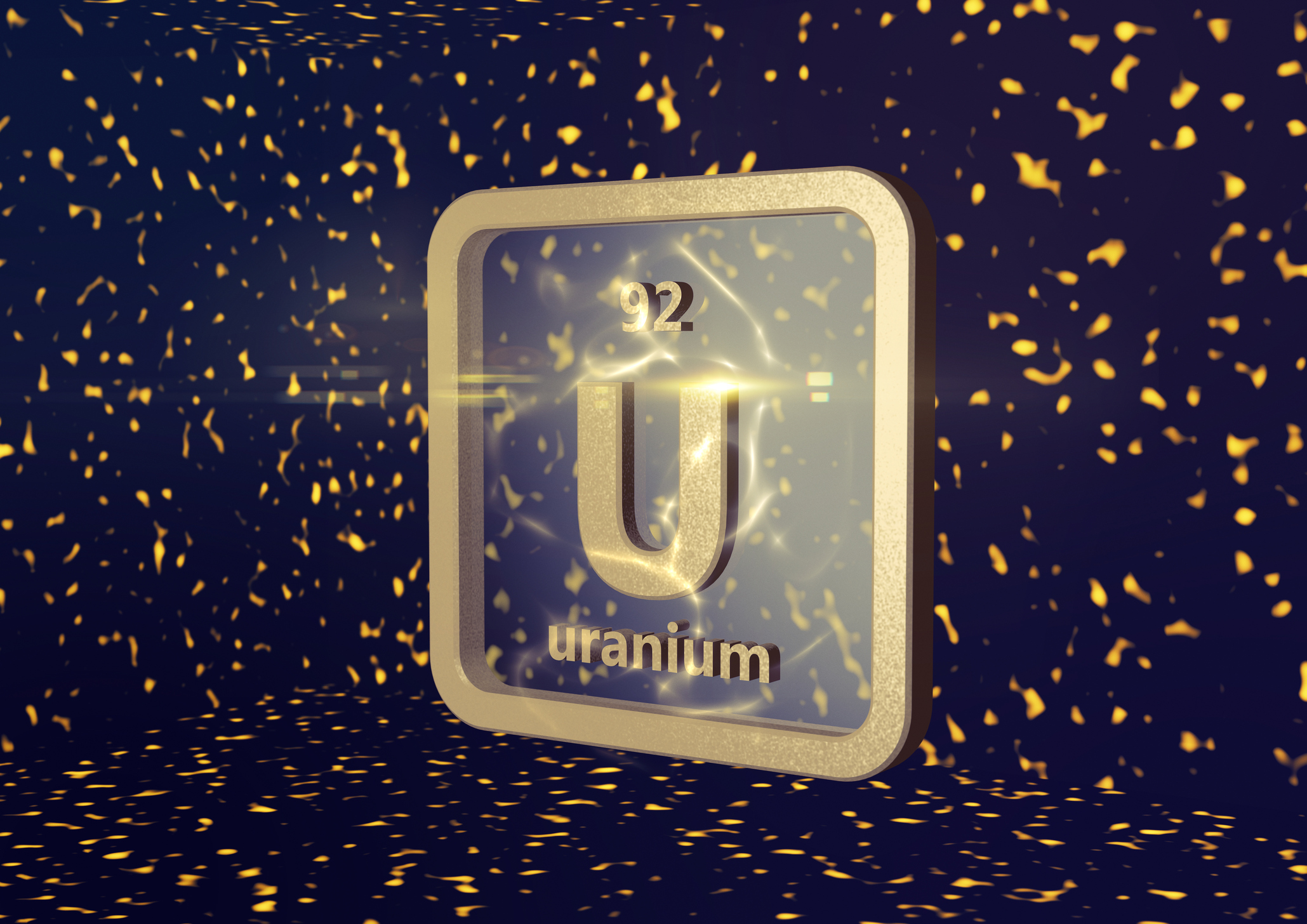
Nuclear energy has returned to favor, a trend reflected in the prices of uranium ETFs.
This too is an artificial intelligence story.
The AI revolution as well as a confluence of other real-world developments is driving rapid growth in electricity demand, with many folks seeking out greener power sources to replace the likes of oil and coal.
And the past couple of years have been a clear reminder for several countries that they'd be best served becoming energy-independent from Russia.
These are among numerous long-term drivers. But they're not the whole story behind price action for uranium.
Much of uranium's buoyancy can be chalked up to rising demand, yes, but also constrained supply.
Years of low prices forced many smaller uranium miners to shut down or throttle down production, and larger miners have spent precious little in capital expenditures to improve their operations.
That process has reversed, with supplies rising as uranium prices surged. And uranium futures reached 18-month lows amid generally sufficient supply.
Nonetheless, the horizon continues to brighten for nuclear energy, and in turn, the small collection of publicly traded uranium stocks … the uranium ETFs that hold them.
It's a good time to explore three uranium ETFs.
It's a small field – these are three of the most pure-play funds in the space. And they still collectively represent just over $5 billion in assets.
But the best ETFs in the uranium space can provide a few different types of exposure to this rocketing commodity.
Data is as of March 25. Yields represent the trailing 12-month yield, which is a standard measure for equity funds.
- Assets under management: $2.9 billion
- Dividend yield: 5.5%
- Expenses: 0.69%, or $69 annually for every $10,000 invested
The Global X Uranium ETF (URA, $24.87) is the largest uranium-focused ETF on the market, with $2.9 billion in assets under management.
Those assets have soared in recent years, mind you – URA claimed just over $100 million in AUM during the COVID lows before gobbling up assets in more recent years.
URA provides comprehensive exposure to the niche uranium industry. Its portfolio of 49 stocks includes miners, refiners and manufacturers of equipment for both uranium companies and nuclear-facility firms.
Concentration risk is often a factor in smaller industry and thematic funds, and that's absolutely the case for URA.
For one, producer Cameco (CCJ) makes up 22% of the uranium ETF's assets.
And the top 10 holdings – which include Canada's NexGen Energy (NXE) and Kazakhstan's Kazatomprom, the world's largest uranium producer – make up almost two-thirds of URA's weight.
Indeed, Global X Uranium ETF's holdings are almost entirely made up of international stocks.
Canada accounts for 43% of net assets, followed by the U.S. (18%), South Korea (12%) and Australia (11%).
URA focuses on uranium miners. But it does have exposure to physical uranium via an 8.3% weight in the Sprott Physical Uranium Trust – a Toronto Stock Exchange-listed ETF that currently holds 66.2 million pounds of uranium.
Learn more about URA at the Global X provider site.
- Assets under management: $1.3 billion
- Dividend yield: 0.0%
- Expenses: 0.75%
While you can't invest directly in Sprott's physical uranium ETF in the U.S., you can buy its mining ETF – the Sprott Uranium Miners ETF (URNM, $34.73).
URNM, for the record, was the North Shore Global Uranium Mining ETF until 2022, when Sprott acquired and reorganized the assets.
Sprott Uranium Miners ETF primarily focuses on companies involved in uranium mining, although it also will invest in companies that hold the physical element, own uranium royalties, or are otherwise involved in the uranium industry.
This is another concentrated, mostly international portfolio with just 36 holdings. It's mighty top-heavy too, though the exposure is spread around a little bit more at the very top than URA.
Namely, Cameco is near the top at 18.5%, but Kazatomprom makes up 15.5%, and the Sprott Physical Uranium Trust is another 11.5%.
The uranium ETF's top holdings also include Canada's NexGen Energy as well as Australian production firm Paladin Energy (PALAF).
Like URA, URNM has seen its assets explode, to more than $1 billion from roughly $48 million at the end of 2020.
Learn more about URNM at the Sprott provider site.
- Assets under management: $1.1 billion
- Dividend yield: 0.8%
- Expenses: 0.61%
The VanEck Uranium+Nuclear Energy ETF (NLR, $79.34), like the other two uranium ETFs, has seen its AUM surge since the COVID bear market to above $1 billion. However, its trajectory is different from URA and URNM.
The VanEck Uranium+Nuclear Energy ETF is a lesson in the importance of "checking under the hood."
The name would seem to imply similar exposure to either URA or URNM. And so would its description (from VanEck):
VanEck Uranium+Nuclear Energy ETF (NLR) seeks to replicate as closely as possible, before fees and expenses, the price and yield performance of the MVIS Global Uranium & Nuclear Energy Index (MVNLRTR), which is intended to track the overall performance of companies involved in: (i) uranium mining or uranium mining projects that have the potential, in MV Index Solutions GmbH's (the "Index Provider") view, when such projects are developed are expected to generate at least 50% of a company's revenues or are expected to constitute at least 50% of such company's assets; (ii) the construction, engineering and maintenance of nuclear power facilities and nuclear reactors; (iii) the production of electricity from nuclear sources; or (iv) providing equipment, technology and/or services to the nuclear power industry.
In other words, the fund invests in miners, nuclear facilities builders, nuclear power companies and associated firms.
A closer look at the ETF's 25 holdings, however, shows that NLR isn't quite a pure-play on uranium as you might expect – or at least, not how you'd expect.
That is, a little more than 48% of the fund is invested in plain ol' utility stocks – companies such as Constellation Energy (CEG), Public Service Enterprise Group (PEG) and PG&E (PCG).
Those power producers do indeed have ties to uranium – all three utilities generate electricity from a collective 27 nuclear plants.
Their businesses simply aren't positioned to benefit from spikes in uranium prices the same way that uranium miners and several other related companies are.
They have enjoyed collective bounce due to rising power demand for the ongoing AI infrastructure buildout.
To wit: Over the past three years, NLR has mustered a 52% total return (price change plus dividends) amid uranium's rise. URA is up 4.2% in that same time frame, while URNM has declined by 11.7%.
Learn more about NLR at the VanEck provider site.







